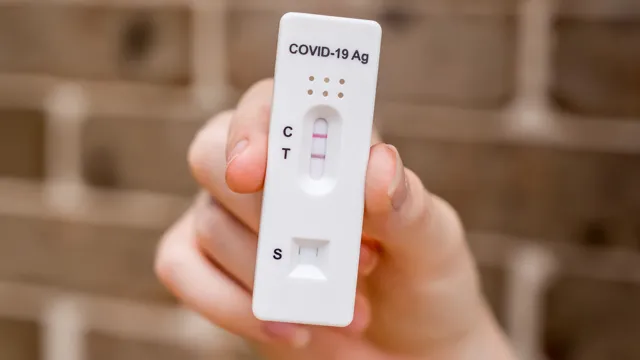Even with Omicron subvariants, can you trust a test you can do at home to correctly diagnose COVID-19? Yes, according to experts, however, they point out that antigen testing may be less sensitive to more recent coronavirus strains.
Antigen testing, also known as fast tests or at-home tests, is often less sensitive than molecular tests (PCR tests), particularly when it comes to early infections, according to the U.S. Food and Drug Administration. Due to the genetic alterations the virus has undergone over time, its sensitivity may further decline.
According to Pedro Piedra, MD, a professor and specialist in pediatric infectious diseases at the Baylor College of Medicine, “antibody tests are effective at-home diagnostics.” But keep in mind that they are less sensitive and have gotten less sensitive with Omicron variations.
However, if the tests are administered properly, you may still be certain that your reading is accurate. Here is what we currently know about the reliability of at-home tests—even when they are compared to Omicron subvariants—as well as any changes you might wish to make to your testing procedures to ensure the most reliable results.
Early on in the infection, keep an eye out for decreased sensitivity.
A test’s lower sensitivity does not imply that it is wholly erroneous. It might only entail a little delay in the case of at-home COVID tests.
The two components of test accuracy are sensitivity and specificity, which refer to a test’s capacity to properly identify patients with a condition and those without disease, respectively.
According to Bruce Tromberg, Ph.D., director of the National Institute of Biomedical Imaging and Bioengineering, at-home tests have a lower sensitivity, meaning they can’t detect tiny levels of virus present in the body.
“The antigen test isn’t going to pick it up if you have an early stage of your illness, with only a tiny amount of virus within you,” Tromberg told Health. “You can have a negative [result] one day, and then 12 hours later you might get a positive because the virus is spreading so quickly within your body,” the doctor explained.
According to Tromberg, at-home antigen tests like iHealth, Binax Now, and Flow Flex don’t have very high detection thresholds or the smallest quantity of detectable viruses in a given sample. Antigen testing may not be able to identify the virus until that amount is closer to 500,000 or a million copies, he added, but a PCR test that you would obtain in a lab may detect the virus as low as 100 or 1,000 copies in one milliliter of fluid.
According to a letter sent by experts at the Harvard T.H. Chan School of Public Health and published in April, rapid testing appears to be less sensitive for newer COVID mutations in general. However, certain tests might be able to pick up Omicron at lower viral concentrations than even Delta.
How to Guarantee the Accuracy of Your At-Home Test Results
The CDC advises people to wait five days after an encounter to take a test or to start testing when they first notice symptoms since at-home tests are unable to identify lower concentrations of the virus. However, they caution that testing negative when you are experiencing symptoms may just indicate that you did the test before the virus could be identified.
Dr. Piedra advises conducting additional tests just to be safe. You’ll be able to tell more clearly if you’re truly negative or if the virus levels were just too low to be discovered if you wait a few days between testing. Repeating testing may also reduce the likelihood.
“We presume that the sample is being taken correctly and properly. Additionally, you could not be getting a decent sample if you’re self-collecting it and are a little afraid “Health was told by Dr. Piedra. Therefore, that must also be considered.
Should At-Home Exams Be Redesigned?
As new variations of the virus emerge, the NIH’s RADx validation core team is constantly assessing tests to ensure that they can still successfully identify the virus, according to Tromberg.
However, testing as we know it is evolving, particularly as more people choose to self-test at home rather than use PCR tests at all. Tromberg worries that the CDC is missing out on “a few 100 million tests every month” since those instances aren’t always reported to the government. Additionally, consumers of at-home testing are not informed of the variation they possess, which would allow public health officials to monitor the virus more.
It’s not quite apparent, according to Tromberg, “if we need variant-specific at-home testing, given that the at-home tests are relatively cheap, available, and they detect the variations.” “Do we need to know the specifics of the variant? In the medical world, that continues to be a contentious topic.”
But in the future, according to RADx, consumers will be able to self-report COVID testing anonymously via a mobile app, at-home tests will be better at detecting viruses, and PCR home tests will become more widely available and less expensive, according to Tromberg.






